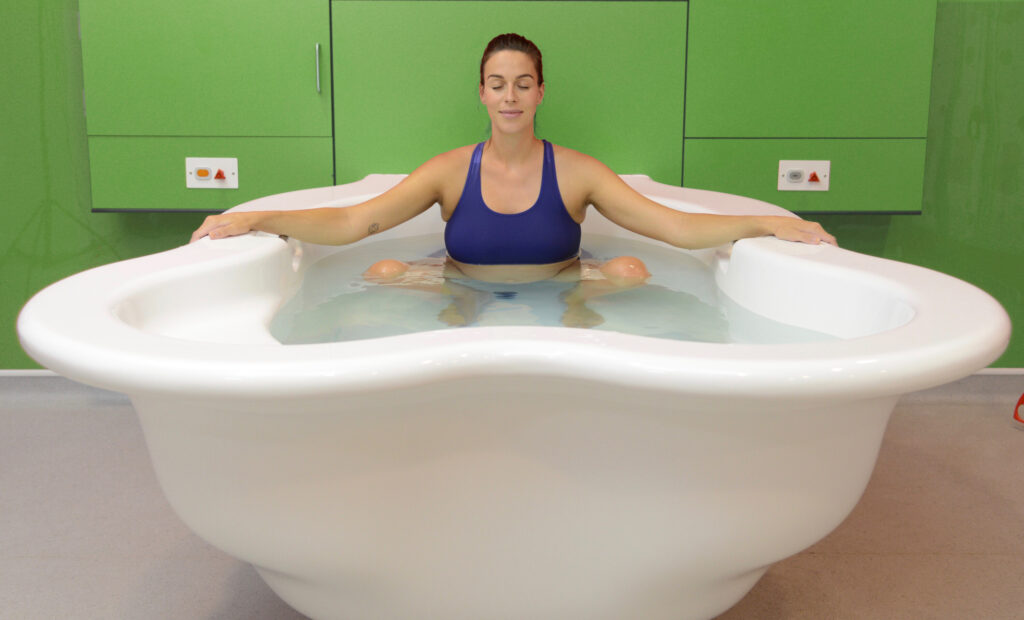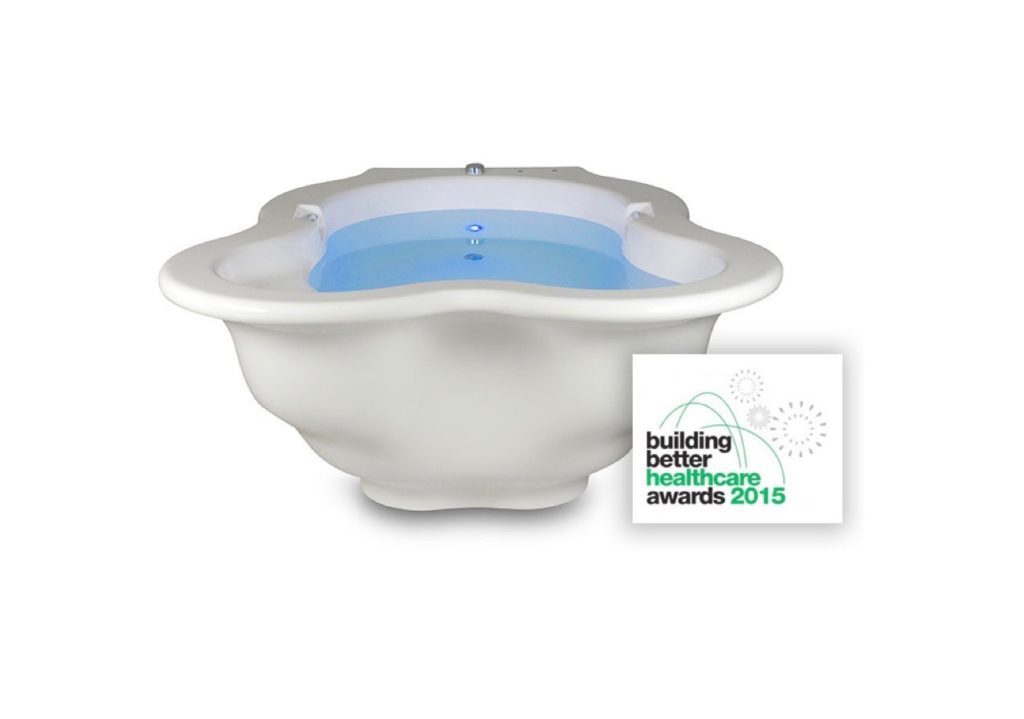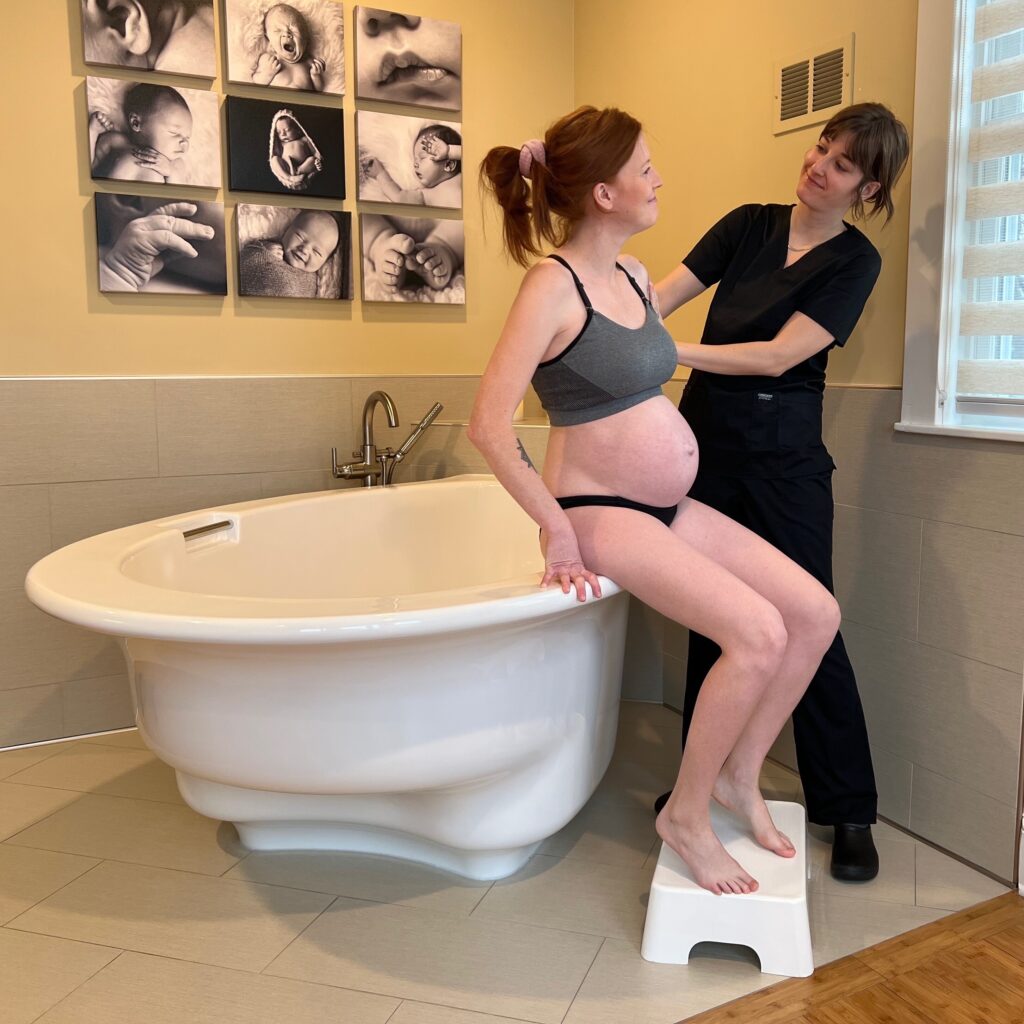Australian College of Midwives – 2013
This position statement should be read in conjunction with the Australian College of Midwives’ (ACM) position statement for midwives caring for women who make choices outside professional advice.
The ACM supports the choice of women to have the opportunity to access water immersion for labour and/or birth. The ACM identifies six key principles for the safe use of water immersion for labour and birth.
Key principles
1. Warm water immersion has been used for relieving the intensity of pain associated with labour. Warm water and buoyancy elevates the release of endorphins and facilitates relaxation.
2. There are many benefits of using immersion in water during labour, including increasing women’s feelings of control and satisfaction, less painful contractions and less need for pharmacological analgesia, shorter labour, less need for augmentation, with no known adverse effects for the woman herself.
3. Women should be provided with unbiased evidence-based information during pregnancy about their options for labour and birth, including water immersion in labour and/or birth, in order to make informed choices.
4. Informed decision-making, informed consent, and right of refusal are accepted principles in Australia. Each and every woman has the right to make informed decisions, including consent or refusal of any aspect of her care. Women must be respected in the choices that they make.
5. Midwives have a primary responsibility to ensure that their decisions, recommendations and practices are focused on the needs and safety of the woman and her baby/babies.
6. There is no evidence of significant increases in perinatal mortality or morbidity although there are some reports of rare complications. There is limited research on the safety of birth in water and most of the evidence that does exist, is restricted to healthy women with uncomplicated pregnancies.
Achieving best practice
To achieve best practice in the use of water immersion for labour and birth, it is necessary for consumers, professional colleges, education providers, health systems, Australian and State and Territory governments and policy makers to work together to:
- foster a culture of valuing physical, emotional, social, cultural and spiritual safety in all birth environments;
- provide women with access to water immersion in labour and/or birth;
- provide the preparation and education required to ensure that midwives are
competent and confident to care for women who choose water immersion in
labour and/or birth; - ensure that midwives to work to their full scope of practice;
- develop evidence-based policies that reflect best practice;
- undertake more research on immersion in water during labour and birth. In
particular, no trials have been identified that assess the effect of immersion in water during the third stage of labour.
Resources to guide practice
The ACM recommends the use of the following resources to guide midwives in their practice:
- Australian College of Midwives, National Midwifery Guidelines for Consultation and Referral, 2013. Australian College of Midwives, Canberra.
- Cluett, E.R., et al., Randomised controlled trial of labouring in water compared with standard of augmentation for management of dystocia in first stage of labour. BMJ, 2004. 328(7435): p. 314.
- Cluett ER, B.E., Immersion in water in labour and birth. Cochrane Database of Systematic Reviews 2009, Issue 2. Art. No.: CD000111. DOI: 10.1002/14651858.CD000111. pub3. , 2009.
- Hall, S.M., & Holloway, I. M. , Staying in control: Women’s experiences of labour in water. . Midwifery, 1998. 14: p. 30-36.
- Miller, Y., Thompson, R., Porter, J., Prosser, S., & Fletcher, R. , Findings from the Having a Baby in Queensland Pilot Survey 2009. 2010. Queensland Centre for Mothers & Babies, The University of Queensland.
- RCOG/Royal College of Midwives. Immersion in Water During Labour and Birth (Joint Statement No. 1), 2006. Available from: http://www.rcog.org.uk/womens- health/clinical-guidance/immersion-water-during-labour-and-birth
- Richmond, H., Women’s experience of waterbirth. The Practising Midwife, 2003. 6(3): p. 26-31.
- Zanetti-Daellenbach, R.A., et al., Maternal and neonatal infections and obstetrical outcome in water birth. European Journal of Obstetrics & Gynecology and Reproductive Biology, 2007. 134(1): p. 37-43.
Date of Issue; 30th May 2013
Date of Review; 29th May 2016








